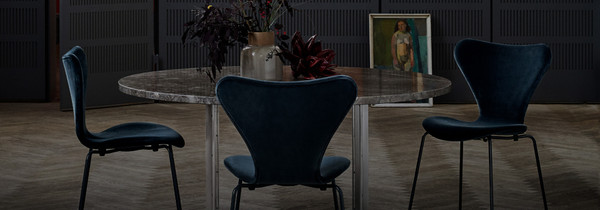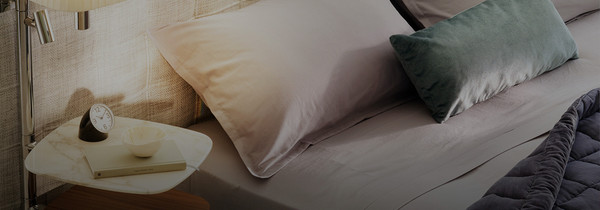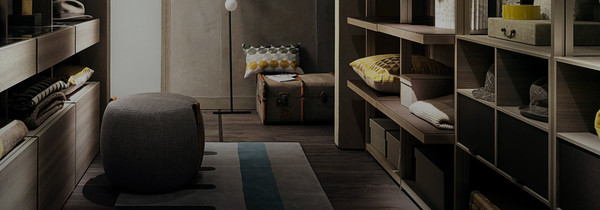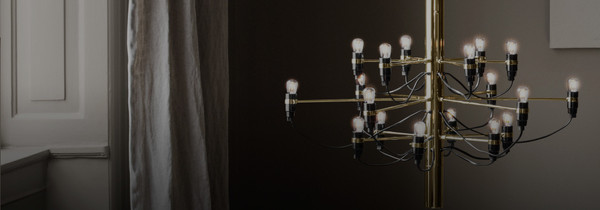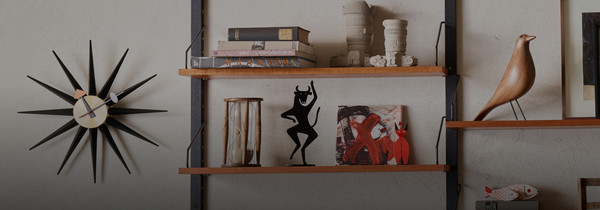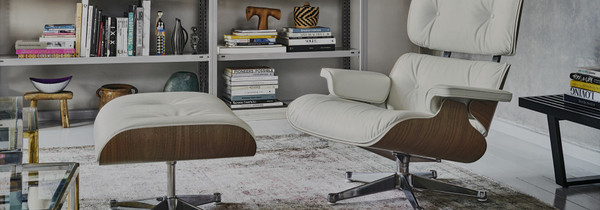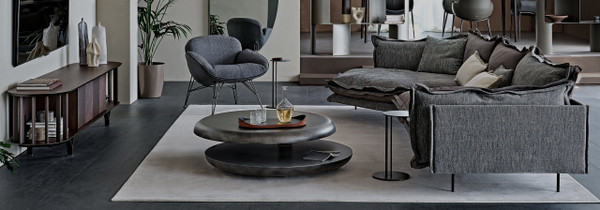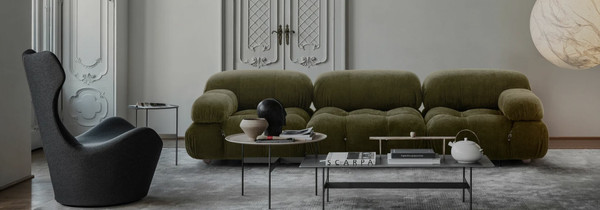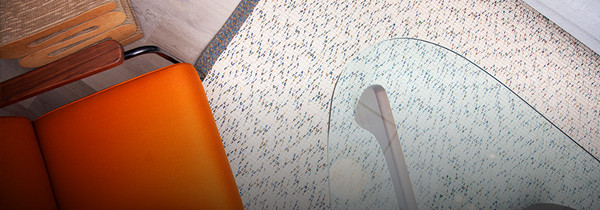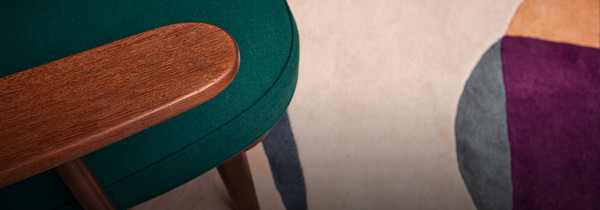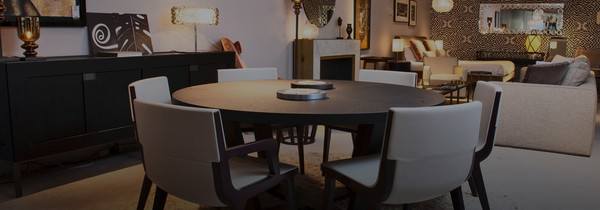
5 Reasons the sofa is the most important piece of furniture
Think of one thing, anything, in an archetypal living room... Yes, we’re picturing a sofa too.
Some pieces of furniture hold within them the power to transform. The sofa is one of these magical, room-changing design objects. It’s not just because they take up the most space or the alluring way they look, but how they make us feel and behave. The sofa epitomises tranquillity and switching-off. It’s committed to comfort, restfulness and unwinding - a physical declaration of me time, our time, down time, and nap time.
The presence of a sofa brings the remainder of the living area together. The sofa needs an armchair or two. Now they need a rug. Next is a coffee table. What about a floor lamp? The sofa comes first; it pulls items around it into a group, serving as an anchor for the entire room, acting as the sun around which everything else revolves and draws energy from.
Take a seat as we explore the sometimes surprising reasons that sofas are so uniquely impactful within the home, and the multifaceted roles the modern sofa plays. We'll delve into the emotion tucked into the cushions and upholstery, and discover how these seemingly simple pieces of furniture can shape our daily routines, host our most intimate conversations, and serve as supportive witnesses to our unfolding lives.
1. Sofas Add Style and Character
As the largest furniture piece in a living room – an upholstered elephant in the room – the sofa automatically draws the eye. It contributes hugely to the aesthetic and feel, and can set the tone for the area’s overall style. The colour, upholstery and decorative choices of the modern sofa can be the defining elements that breathe life into a space – contemporary, colourful designs exuding modernity and energy, while classic forms in neutral palettes radiate timeless elegance and sophistication.
Design and shape are just as important as the upholstery, with curves, angles, legs, arms and backs all narrating the style and story of the piece. These structural foundations can convey a sense of formality or familiarity, telling you whether to curl up and get cosy or sit upright for an official tete-a-tete, and turn the sofa into a beautiful sculptural object as well as a practical piece of seating.
Pay attention to details like the legs, trim, and stitching, as these small-yet-significant touches often contribute to a high-quality, luxury feel, serving as a testament to the craft skills that went into creating the piece, as well as enhancing the design’s overall appearance to give the seat a distinctive and luxurious edge.
Sofas invite a finishing flourish for that extra flair. A contemporary sofa doesn’t feel complete without a selection of decorative cushions or a cosy throw positioned to be close at hand. Be they in colours, patterns or textures complementary to the body of the sofa and/or the room as a whole, or in contrasting styles, these little extras not only bring visual interest but also a personal touch to the piece making your sofa stylish, characterful and truly one-of-a-kind.
2. Sofas Shape the Room's Layout
As the main focal point in a room, a sofa’s placement significantly influences the space’s overall layout and dictates where people naturally gather. Whether placed against a wall or floating in the centre, a sofa’s positioning directs where people walk through the room as well as defining how light and air flow. The sofa is also vital to floor plans, its large size enabling it to divide rooms and create internal zones for different activities including living, dining, cooking or working. Other living furniture bows to the sofa, arranged in accordance to where it first settles. Accompanying pieces, such as coffee tables, side tables and lighting, follow and complement the sofa's placement, building on it to create a balanced, functional space.
The sofa's orientation guides sitters’ attention to various views such as guests on the other side of the room, spots of natural light, or focal points like fireplaces, artwork, or Netflix’s latest must-watch. It's not just about where you sit or what you’re sitting on; it's about the world the sofa opens up for you to explore without even standing up.
Now, the big question – should the sofa be against the wall or free-floating within the room? It all depends on the size of the area, and what you’re trying to achieve. A flush-to-the-wall set up can create an intimate, protected feel, while a floating seat helps to define open space and fosters a sense of fluidity.
3. Sofas Are Mega Versatile
As the sofa has evolved from a formal place to perch to a multifunctional piece of everyday furniture, we have demanded more and more from it. It should be somewhere to slump, curl up and get cosy. It should support the back and arms. It should offer sleeping opportunities. Storage should be nearby, perhaps integrated? It should be snuggly. It should be cooling. It should create personal space. It should bring people together. The list goes on and on and on.
The result? The modern sofa is the epitome of versatility, with modular designs becoming increasingly popular for their customisable aspects, so each sofa can be rearranged and configured to suit the space it’s in and the function needed from it. These designs can spread through rooms and around corners to create expansive, sociable seating areas as well as form compact loveseats and single person chairs. Interchangeable modules can be added such as: hard surfaces and storage, footstools, and different shaped arms or backs to meet multiple ever-changing needs.
The style of the sofa can now also be edited, with pieces often available in a huge library of different colours, textures, materials and patterns to suit a wide range of interiors, and with smaller elements such as legs and cushions easily swappable for alternates.
The modern sofa has become an expression of individuality, the same base design adaptable to create options spanning a high-backed sleek leather and chrome L shape to a low-slung floral and timber two-seater, offering limitless possibilities for tailoring its style and coordinating its look with diverse tastes and interior aesthetics.
4. Sofas Form A Social Hub
When guests stop by, there’s only one place you want to gather – somewhere soft, comfortable, welcoming, and practical as well as chic. The most enticing place in the house, the sofa’s main function is to provide relaxing seating for multiple people in a pleasant and inviting environment. Their expansive cushions and soft upholstery create a natural congregation point for socialising, the in-built cosiness meaning that conversations last longer and are more enjoyable than they would in harder-surfaced areas.
Classically positioned near other seating such as armchairs, sofas physically bring people together and encourage face-to-face interactions. Classically shaped pieces nudge people physically closer, while the current trend of asymmetrically-shaped designs can position sitters opposite each other, prompting both intimate discussion and shared moments, evoking a sense of togetherness and connection.
As well as enabling face-to-face time, sofas also form the backdrop to group entertainment activities – often angled to face screens, they’re a ticket to film nights, sports viewing or gaming sessions, bringing people together for shared leisure experiences hand in hand with technology.
The sofa’s overarching softness and support means that sitters can't help but unwind, relax, and settle in for some group bonding. The contemporary sofa creates a warm and inviting atmosphere that serves as a central point for family and friends, fostering connections and memories – which, really, is what we’re all here for in the first place.
5. Sofas Are Symbolic
We all naturally gravitate towards the sofa. It represents comfort and rest, holding profound symbolic significance within a home as the official place to just chill. The sofa is a sanctuary, a place where inhabitants can retire from the stresses of daily life and let the cushions and springs take the weight. It’s one of the most important pieces of furniture in terms of well-being, providing a (compact) sanctuary for serenity and rejuvenation.
A sofa is created for sharing. Unlike other seating in the home – lounge, arm and dining chairs – it’s for getting together on, symbolising family, friendship and intimacy as a place where we forge connections. It also represents the art of welcoming guests into the home. Inviting someone to take a seat on the sofa – the most coveted spot in the home – is a gesture of warmth and friendship which makes visitors feel valued and at ease. Thus, as the years pass, sofas come to represent moments of bonding and memories created.
Conseta Sofa | Aurae Sofa | Drive Sofa | DS-600
As an investment piece of furniture, the sofa is a clear statement about its owner’s taste and aesthetic vision. It’s a big, bold statement – from traditional timeless elegance to something more avant-garde and contemporary, the sofa is a powerful symbol of personal style and design identity. It's not just a seat; it's a distinctive and personal fusion of form and function, an interior representation of the idea that our homes are not just places we reside in, but stages where our unique stories unfold and our personalities showcase. The most important seat in the house? We think so.
Inspired to step up your Sofa by our blog? Discover our full sofa collection here










